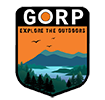Best Freshwater Fishing Spots in Texas
Fishing is the most popular outdoor sport in the United States. Every state has special fishing spots that the locals love, and Texas happens to have an abundance of great places to fish. There are 50 lakes in East Texas alone, so anglers have plenty of opportunities to bring home BIG fish.
While Texas has its share of good saltwater fishing off the gulf coast, its inland fishing has a lot to offer. Grab your freshwater rods, figure out the right baits and lures for when and where you are fishing, and get your line wet.
Toledo Bend Reservoir
Toledo Bend Reservoir is located in both Texas and Louisiana. It is positioned on the Sabine River and has a surface area of 181, 600 acres. The deepest portion of the reservoir is 110 feet. Locals simply call this Toledo Bend, or Toledo Bend Lake.
Toledo Bend is the largest lake in the South and it is the fifth largest man-made lake in the United States. This body of water has 1,200 miles of shoreline and provides the opportunity for water activities like fishing, swimming, kayaking, and many other water activities.
What kind of fishing is best in Toledo Bend?
- Bank or shore fishing
- Boat Fishing
- Rod-n–reel fishing
- Trotline Fishing
- Noodling
Boat Fishing on Toledo Bend
This is a large body of water so you can operate larger boats, pontoon boats, bass boats, small aluminum boats, airboats, kayaks, canoes, and just about any type of small to medium size fishing boat. There are hundreds of established boat launches around the lake.
One thing you have to watch out for is the submerged trees and vegetation. It is not recommended that you run your boat motor at full speed on the water, especially if you are fishing in an area that is unfamiliar to you.
Kayaks, canoes, and smaller craft can be taken anywhere on the lake, but they do best in the calmer waters located closer to the shoreline and in the protected coves. If you choose to paddle out to fish, I suggest using a kayak fish finder so you can figure out all the structure beneath the surface. And of course, wear a lifejacket.
Toledo Bend does allow houseboats on the lake. You can only keep your boat parked in one area for 30 days and then you must move the boat a minimum of 40 feet.
When to fish Toledo Bend
|
Species |
Best Fishing Times |
|
Largemouth Bass |
February & March, good through August |
|
Striped Bass |
March through May, Good Year-Round |
|
White Bass |
March through May, good until winter |
|
Catfish |
Year-round |
|
Flathead catfish (Appaloosa catfish, yellow-cat) |
March through October |
|
Crappie (White Perch) |
March through May, Good until winter |
|
Sunfish |
March through May, Good until winter |
|
Long-ear Sunfish |
March through May, Good until winter |
|
Warmouth Sunfish |
March through May, Good until winter |
|
Redbreast Sunfish |
March through May, Good until winter |
|
Bluegills |
March through May, Good until winter |
|
Bowfin |
Spring of the year |
|
Pickerel Redfin |
March through May, Good until winter |
|
Freshwater Drum (Gasper-Goo) |
Year-round |
|
Alligator Gar |
Year-round |
|
Longnose Gar |
Year-round |
Toledo Bend is a great fishing spot. If you had to choose just one lake to fish in Texas, Toledo Bend would be one of the top ones to consider. There are plenty of amenities available with camping, hotels, and air B&Bs, so the out-of-town anglers can stay comfortable while they are here.
Sam Rayburn Reservoir
Lake Sam Rayburn, as the locals call this reservoir, is located about fifteen miles north of Jasper, Texas. It has a surface area of 114,500 acres. The deepest portion of the lake goes down to 80 feet.
Sam Rayburn is home to many fishing tournaments each year. It is a fabulous lake for catching bass and crappie. Catfish lovers also enjoy the lake because the different species of catfish are plentiful. You will want to have a well-stocked tackle box so you can take advantage of whatever might be biting that day.
What kind of fishing is best at Sam Rayburn Reservoir?
- Bank or shore fishing
- Boat Fishing
- Rod-n-reel fishing
- Trotline Fishing
- Noodling
Boat Fishing On Sam Rayburn
This is a large body of water and anglers can use small to medium size boats effectively on it. Smaller boats will most likely want to stay close to the shoreline or in the protected coves.
When you are leaving or approaching this waterway you must drain the water from the boats. This is being used as an effective way to control the zebra mussel population.
When to fish Sam Rayburn
|
Species |
Best Fishing Times |
|
Largemouth Bass |
February through October, slow in winter |
|
Striped Bass |
March through October, slow in winter |
|
White Bass |
March through October, slow in winter |
|
Bluecats |
Year-Round |
|
Channel Cat |
Year-Round |
|
Bowfin |
Springtime |
|
Flathead catfish (Appaloosa catfish, yellow-cat) |
March through October |
|
Crappie (White Perch) |
March through October, slow in winter & summer |
|
Sunfish (All Species) |
March through October, slow in winter & summer |
|
Freshwater Drum (Gasper Goo) |
Year-round |
|
Longnose gar |
Year-round |
|
Alligator gar |
Year-round |
|
Trout (Rainbow and Brown) |
March through October, slow in winter & summer |
Sam Rayburn is a favorite spot for locals and out-of-town anglers, swimmers, and anyone that enjoys playing in the water. Camping, fishing, swimming, and all matters of boating are encouraged here.
Lake Fork
Lake Fork has the perfect environment for bass to grow into BIG bass. The lake record is 18.8 pounds, and there have been many slightly smaller bass weighing between 7 and 10 pounds brought out of these waters. Records show that 34 of the top 50 largemouth bass caught in Texas have been caught at Lake Fork.
The lake is a reservoir that encompasses 27,264 acres. There are 315 miles of shoreline so ample opportunities for bank fishing exist here. The deepest portion of the lake is 60 feet to the bottom. Lake Fork is well known among anglers and several fishing tournaments are hosted on this lake each year.
What kind of fishing is best at Lake Fork?
- Bank or shoreline fishing
- Boat fishing
- Rod-n-reel
- Trotline
- Noodling
Boat Fishing
Boat lanes are readily marked on the lake to help you avoid dangerous situations. This lake can be fished from the majority of small and medium-sized fishing boats.
- Aluminum boats
- Air-boats
- Pontoon boats
- Bass boats
When to fish Lake Fork?
|
Species |
Best Fishing Times |
|
Largemouth Bass |
January to March, October, and November |
|
White Bass |
January to March, October, and November |
|
Catfish (all species) |
Winter and spring are best, good year-round |
|
White Crappie (White Perch) |
October – March is best, good year-round |
|
Black Crappie |
October – March is best, good year-round |
|
Bowfin |
Late February to Early May |
|
Sunfish (All Species) |
Year-round |
|
Carp |
Year-Round |
|
Freshwater Drum (Gasper Goo) |
Year-Round |
Lake Fork is a prime fishing area that you should try if you love to bass fish. There are plenty of campgrounds, and local places to stay that will accommodate out-of-town anglers and their families.
Neches River
River fishing is quite different from lake fishing. The water in the river moves faster and the fish are often a little smaller than their lake cousins. On the other hand, the fish in the river put up a better fight and are often stronger than their lake cousins.
This river travels for 415 miles and through fourteen Texas counties. The Neches River is 400 feet wide in some areas, and about 40 feet deep. This wider section of the river allows the river to be a deep-water ship channel in the southernmost portion of the river.
What kind of fishing is best on the Neches River?
- Bank or shore fishing
- Boat Fishing
- Rod-n-reel fishing
- Trotline Fishing
Boat Fishing
The Neches is both deep and wide so it is perfect for most types of fishing boats. You will even find houseboats along the river.
This river easily accommodates:
- Aluminum boats
- Airboats
- Bass boats
- Houseboats
- Pontoon boats
When to fish the Neches River
|
Species |
Best Fishing Times |
|
Hybrid Striped Bass |
March through October, slow in winter & summer |
|
Largemouth Bass |
Year-Round |
|
White Bass |
March through October, slow in winter & summer |
|
Yellow Bass |
March through October, slow in winter & summer |
|
Alligator Gar |
Year-Round |
|
Longnose Gar |
Year-Round |
|
Bluecats |
Year Round |
|
Channel Cat |
Year Round |
|
Flathead catfish (Appaloosa catfish, yellow-cat) |
Year-Round |
|
Black Crappie |
March through October |
|
White Crappie (white perch) |
March through October |
|
Freshwater Drum (Gasper Goo) |
Year Round |
|
Redear Sunfish |
Year-Round |
|
Warmouth Sunfish |
March through October |
|
Buffalo |
Year-Round |
This river is worth seeing, and fishing. The natural wild beauty of the river has earned it the name “the last wild river in east Texas.” Along with the fish, this river supports many wildlife species and a diverse collection of plant life.
Lampasas River
The Lampasas River provides anglers the opportunity to fly fish in Texas. Fly fishing is not feasible in most of the lakes and rivers of Texas, so the Lampasas River is a treat for anglers that love this type of fishing.
The Lampasas River is also known for producing some great size largemouth bass, and flathead catfish. Locals call the flatheads yellow cats or appaloosa cats. You will need to fish the deep pools along the river to get one of those big catfish interested in your bait.
What kind of fishing is best on the Lampasas River?
- Bank or shore fishing
- Fly-fishing
- Kayak fishing
Boat Fishing
The Lampasas River is made up of shallow runs with some deep holes. This type of waterway does not support most bass boats, and can even prove difficult to navigate in smaller aluminum boats. Kayak fishing can prove to be great in this river.
When to fish the Lampasas River
|
Species |
Best Fishing Times |
|
Largemouth Bass |
March through October |
|
White Bass |
March through October |
|
Spotted Bass |
March through October |
|
Carp |
Year-round |
|
Freshwater Drum (Gasper Goo) |
Year-round |
|
bluegills |
March through October |
|
Green Sunfish |
March through October |
|
Catfish (Blue cats and Channel cats) |
March through October |
|
Flathead catfish (Appaloosa catfish, yellow-cat) |
March through October |
The Lampasas River is a little smaller and a lot shallower than the Neches, but do not let that deter you from trying this waterway out. It is perfect for anyone wanting to fish from the shoreline, and it is a scenic beauty.
Scenic Fishing – Big Bend National Park (the Rio Grande)
If you are looking to find a place that has a little more visual interest, and you can fish on foot or by paddling, check out Big Bend.
Fishing in Big Bend National Park is a serene experience, centered on the Rio Grande. Popular spots include the Santa Elena Canyon and Rio Grande Village areas, where the calm waters make casting easier. Anglers can expect to catch species like catfish and carp, but remember, it’s all catch-and-release to protect the fragile ecosystem. You must follow park rules: use only artificial lures, avoid live bait, and respect the river’s delicate balance. Bring plenty of water, as the desert heat can be intense, and enjoy the peaceful, wild surroundings while you fish.






